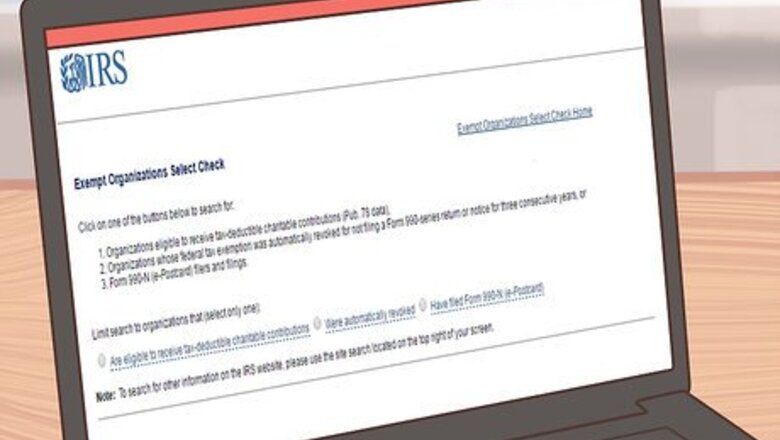
views
Keeping Track of Your Donations
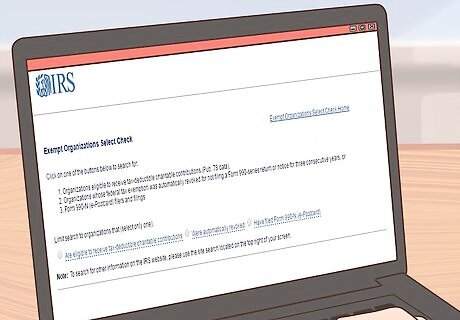
Make sure you donate to a tax-exempt organization. You’ll be able to receive a tax deduction only if you donate to a tax-exempt organization. Make sure the organization is a 501(c)(3) tax-exempt organization registered with the IRS. Large charities like Goodwill and the Salvation Army are sure bets. If you’re donating to a smaller, local organization, call them to see if you’ll be qualified to get a tax deduction for your donation. If you’re not sure whether an organization is tax-exempt, search the charities and nonprofits database at the IRS website: https://apps.irs.gov/app/eos/. Realize, however, that some eligible organizations (such as churches) are not listed in the database. Simply giving used clothing directly to a needy person does not qualify.

Donate items in good condition only. To receive a deduction, your donated items must be in good used condition or better. If not, you’ll only be able to get a deduction for higher-value items worth over $500 if you get an appraisal. If you want to donate a high-value item that shows signs of wear (stains or snags, for instance), launder and repair the item before having it appraised.
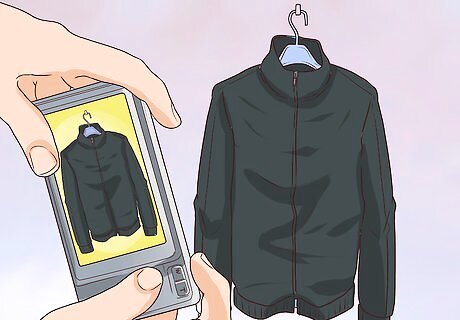
Document the condition of high-value items. Take digital photographs of high-value items, such as a leather coat or expensive shoes. Make sure to take pictures from different distances—up close as well as from far away. Print off the photos and keep them with your other documentation.

Keep your donation receipts. When you donate items, don’t just drop them off at the donation center. Ask for a receipt, preferably an itemized one, before you leave. If your donation is worth less than $250, the charity must give you a receipt showing its name and address, date and location of donation, and a reasonably detailed description of the property donated. It is not absolutely necessary to get this receipt for small donations, but it is helpful. If your donation was worth at least $250 but less than $500, you’ll need a written receipt that indicates the description of the donation. The receipt must also identify any goods or services you received in exchange, along with an estimate of their value.
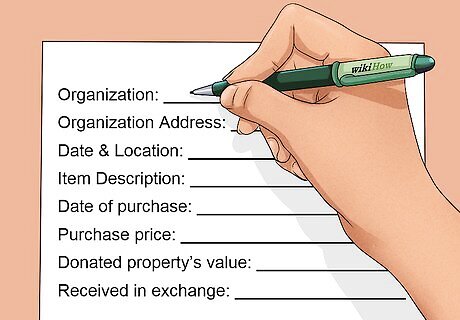
Make an itemized list of donated items. If you can’t get a receipt, then you must keep detailed written records of your donation. In any event, you should keep a detailed spreadsheet for your own records. Include the following information: organization you donated to organization’s address date and location of the donation reasonably detailed description of the items (e.g., “Wal-Mart men’s T-shirt, excellent condition”) approximate date of purchase purchase price how you figured the donated property’s value what you received in exchange, if anything
Calculating the Value of Your Donations
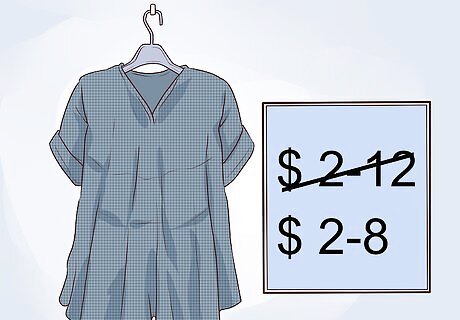
Find a valuation guide. For each item you donate, you’ll need to calculate the fair market value, which is the price an item would currently fetch if there was a willing buyer and a willing seller. Some donation centers have valuation guides on their websites which make this process easy. Goodwill, for example, provides estimated values for various items. For example, Goodwill’s guide states that a woman's blouse is worth between $2 and $12. Adjust the value based on the age of the item. If a blouse is a few years old, it may garner $8 rather than $12.

Perform your own research. If there’s no valuation guide, then you can check how much similar items have sold for in consignment stores, thrift shops, or on eBay. Write down the date and time that you checked. Value conservatively. If you try to squeeze every penny you can out of your donations, that could raise a red flag at the IRS, and they might call for an audit. It's not worth taking the chance.

Determine whether to have the items appraised. Most used clothing will not need to be appraised. However, you’ll need a professional appraisal if you are claiming a deduction of over $500 for an item that is in less than good condition. In this situation, you can claim the deduction only if you get an appraisal. However, you do not need to have the item appraised if it is in better than good condition. You’ll also need an appraisal in the unlikely event that you donate more than $5,000 of used clothes in a year.

Find a qualified appraiser. The appraiser must be someone who regularly prepares appraisals, and they should have a designation from a recognized professional appraiser organization. You can find qualified appraisers in your area in the phone book or online. Ask about their experience and their credentials. Major appraisal organizations include the International Society of Appraisers (ISA), the Appraisers Association of America (AAA), and the American Society of Appraisers (ASA). Always remember to get a signed copy of the appraisal, which you will need to submit with your return.
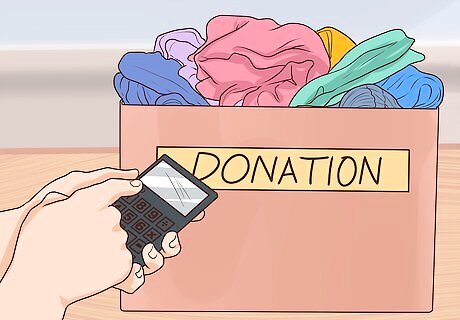
Add up the total fair market value of items donated. Remember that this is not the total amount that you originally paid for the items. Instead, it is their current value as used goods. Double-check your math to make sure you’ve arrived at the correct total. If you’re uncertain that the total value of your goods was calculated correctly, consult with a local tax advisor who is familiar with assessing the fair market value of donated items.
Filling Out Your Tax Forms
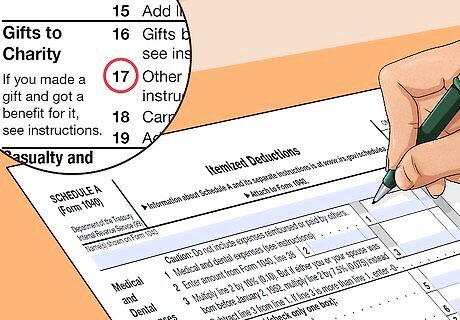
Fill out Schedule A of Form 1040. Schedule A is a page included with Form 1040 that allows you to list your itemized deductions. List the total value of your donated goods on Line 17, “Gifts to Charity.”
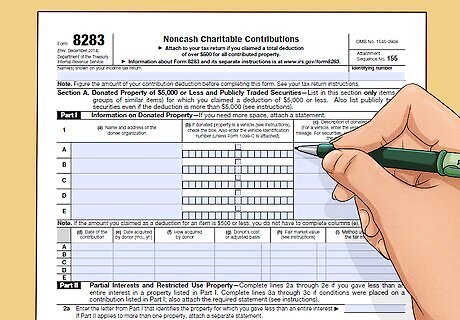
Complete Form 8283 for goods valued at over $500. You need to complete this extra form if your donation totals more than $500. This form will ask you to give detailed information about the goods and the donation. Generally, Form 8283 does not need to be signed by an appraiser. However, you will need it signed by an appraiser if you are donating an item that is in less than good condition and you are claiming more than $500 for it. You will also need the form signed by an appraiser in the unlikely event you donate more than $5,000 of used clothes in one year.

Double check the accuracy of your information. Since it’s easy to claim that donated items are more valuable than they really are, the IRS may pay special attention to the itemized deductions section of your tax form. If you get audited, you’ll need to have proof of your donated items’ value to back up the total you listed, so don’t make the mistake of exaggerating numbers or listing donations you didn’t make. Don’t list items for which you haven’t kept good records or don’t have a donation receipt. Even if you donated the item and list an accurate number for the fair market value, you won’t be able to prove you made the donation if you get audited.
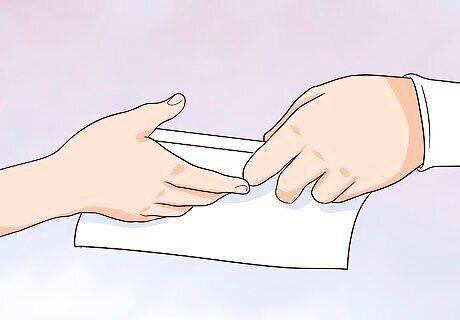
Submit your taxes. Make a copy of your completed tax forms for your records. If necessary, be sure to include a copy of the signed appraisal you received. You do not need to submit your receipts with your tax return. However, hold onto them in case you are audited.




















Comments
0 comment